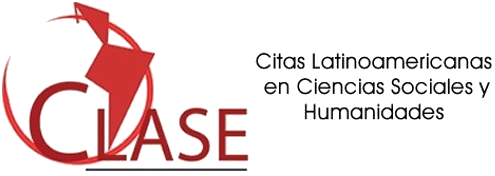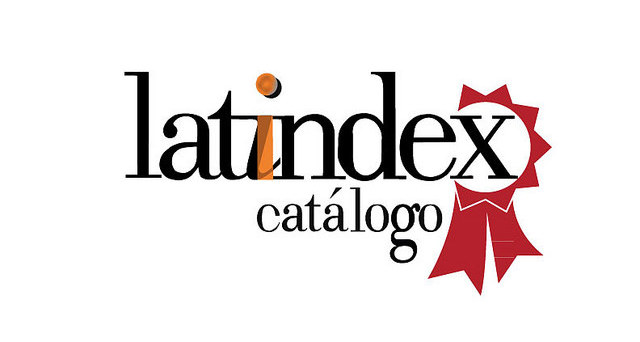The Conquests of the Accordion. From the Old Worlds to New Horizons
DOI:
https://doi.org/10.29340/en.v4n8.177Keywords:
diatonic button accordion, invention of musical instruments, proletarianization of music production, industrialization, birth of popular music, international migration, Hohner CompanyAbstract
The accordion and its many variations –from the concertina and the diatonic button accordion, to the hurdy-gurdy and the bandoneon– have flourished and taken roots in several cultures. Commonly known as the “common man’s piano,” this instrument became a medium for the growth of folkloric music, and very popular in many regions of the world, particularly in the late 19th Century and early 20th Century. Because of this, its use as a “one-man band” made it easier to use among people in popular sectors, due to its ability to produce melodies, harmonies and low-pitched tones at the same time. It was also strong and long-lasting, making it ideal for open air events. This aticle follows the story of the accordion, from its beginnings in Europe, to the New World, on the other side of the Atlantic.
Downloads
References
Anzaghi, Davide (1996). “Doremifa: Accordions at Castelfidardo”. fmr: The Magazine of Franco Maria Ricci, vol. 79, pp. 81-98.
Atlas, Allan W. (1996). The Wheatstone English Concertina in Victorian England. Oxford: Clarendon Press. DOI: https://doi.org/10.1093/oso/9780198165804.001.0001
Berghoff, Hartmut (2006). Zwischen Kleinstadt und Weltmarkt: Hohner und die Harmonika 1857-1961, Unternehmensgeschichte als Gesellschaftsgeschichte. Paderborn: Ferdinand Schöningh.
Berlioz, Héctor (1858). A Treatise upon Modern Instrumentation and Orchestration. Londres: Novello, Ewer and Co.
Bermúdez, Egberto (2012). “Beyond Vallenato: The Accordion Traditions in Colombia”, en Helena Simonett (ed.), The Accordion in the Americas: Klezmer, Polka, Tango, Zydeco, and More! Urbana: University Press of Illinois, pp. 199-232.
Bohlman, Philip V. (1998). “Immigrant, Folk, and Regional Musics in the Twentieth Century”, en David Nicholls (ed.), The Cambridge History of American Music. Cambridge: Cambridge University Press, pp. 276-308. https://doi.org/10.1017/CHOL9780521454292.012 DOI: https://doi.org/10.1017/CHOL9780521454292.012
Bugiolacchi, Beniamino (s.f.). “Castelfidardo: International Centre of Accordion Production in Italy” [página web]. Accordions Worldwide. Recuperado de http://www.accordions.com/index/his/his_it.shtml, consultado el 20 de marzo de 2020.
Crook, Larry (2005). Brazilian Music: Northeastern Traditions and the Heartbeat of a Modern Nation. Santa Barbara: abc-Clio.
Doktorski, Henry (1998). “The Classical Accordion, Part 1” [página web]. Ksanti. Recuperado de http://www.ksanti.net/free-reed/history/classic.html, consultado el 25 de mayo de 2020.
Dunkel, Maria (1996). “Harmonikainstrumente”, en Ludwig Finscher (ed.), Musik in Geschichte und Gegenwart, vol. 4. Kassel: Bärenreiter, pp. 167-210.
Eickhoff, Thomas (1999). “‘Harmonika – Heil’: Über ein Musikinstrument und seine Ideologisierung im Nationalsozialismus”, en Brunhilde Sonntag, Hans-Werner Boresch y Detlef Gojowy (ed.), Die dunkle Last: Musik und Nationalsozialismus. Colonia: Bela.
Fett, Armin (1956). “Harmonika”, en Friedrich Blume (ed.), Die Musik in Geschichte und Gegenwart, vol. 5. Kassel: Bärenreiter, pp. 1665-1699.
Greene, Victor (1992). A Passion for Polka: Old-Time Ethnic Music in America. Berkeley: University of California Press. DOI: https://doi.org/10.1525/9780520911727
Häffner, Martin (1991). Harmonicas: Die Geschichte der Branche in Bildern und Texten. Trossingen: Hohner.
Harrington, Helmi S. (2001). “Accordion”, en Stanley Sadie (ed.), The New Grove of Music and Musicians, vol. 1. Londres: Macmillan, pp.56-66.
Hutchinson, Sydney (2012). “No ma’ se oye el fuinfuán: The Noisy Accordion in the Dominican Republic”, en Helena Simonett (ed.), The Accordion in the Americas: Klezmer, Polka, Tango, Zydeco, and More! Urbana: University Press of Illinois, pp. 249-267.
Leary, James P. (2002). “The German Concertina in the Upper Midwest”, en Philip V. Bohlman y Otto Holzapfel (ed.), Land without Nightingales: Music in the Making of German-America. Madison: Max Kade Institute for German-American Studies, pp. 191-232.
Leary, James P. y Richard March (1991). “Dutchman Bands: Genre, Ethnicity, and Pluralism”, en Stephen Stern y John A. Cicala (ed.), Creative Ethnicity: Symbols and Strategies of Contemporary Ethnic Life. Logan: Utah State University Press, pp. 22-43.
Loveless, Megwan (2012). “Between the Folds of Luiz Gonzaga’s Sanfona: Forró Music in Brazil”, en Helena Simonett (ed.), The Accordion in the Americas: Klezmer, Polka, Tango, Zydeco, and More! Urbana: University Press of Illinois, pp. 268-294.
Maurer, Walter (1983). Accordion: Handbuch eines Instruments, seiner historischen Entwicklung und seiner Literatur. Viena: Harmonia.
Peñón, Arturo y Javier García Méndez (1988). The Bandonion: A Tango. Londres y Ontario: Nightwood.
Pérez Bugallo, Rubén (1992). “Corrientes musicales de Corrientes, Argentina”. Latin American Music Review, vol. 13, núm. 1, pp. 56-113. https://doi.org/10.2307/780062 DOI: https://doi.org/10.2307/780062
Ramos Aguirre, Francisco (2016). “El acordeón en San Antonio (1855-1910)”, en Luis Omar Montoya y Gabriel Medrano (ed.), Historia social de las músicas populares latinoamericanas. Guanajuato: Universidad de Guanajuato, pp. 133-154.
Roth, Ernst (2006) [1979]. Schwyzerörgeli: Geschichte, Instrumentenbau, Spielpraxis. Altdorf: Gamma.
Schwietert, Stefan (dir.) (2000). El Acordeón del Diablo: Vallenato, Cumbia und Son [Película]. Berlín: Zero Film, Absolut Medien, Arte Edition.
Snyder, Jared (2012). “Garde ici et ’garde là-bas: Creole Accordion in Louisiana”, en Helena Simonett (ed.), The Accordion in the Americas: Klezmer, Polka, Tango, Zydeco, and More! Urbana: University Press of Illinois, pp. 66-86.
Soyka, Walther (2013). “Die Schrammelharmonika” [página web]. Recuperado de http://schrammelharmonika.nonfoodfactory.org/geschichte.html, consultado el 27 de mayo de 2021.
Teufel, Andreas (2006). “Die Schrammelharmonika” [página web]. Die Schrammelharmonika. Recuperado de http://schrammelharmonika.nonfoodfactory.org/Andreas_Teufel, consultado el 27 de mayo de 2021.
Wagner, Christoph (2001). Das Akkordeon, oder die Erfindung der populären Musik: Eine Kulturgeschichte. Maguncia: Schott.
Wayne, Neil (1991). “The Wheatstone English Concertina”. The Galpin Society Journal, vol. 44, pp. 113-149. https://doi.org/10.2307/842213 DOI: https://doi.org/10.2307/842213
Wenzel, Haik, Martin Häffner, Petra Schramböhmer y Anselm Rössler (2004). Ewig jung trotz vieler Falten. History Unfolds! Bergkirchen: PPVMedien, Edition Bochinsky.
Williams, Raymond (1995) [1958]. The Sociology of Culture. Chicago: University of Chicago Press.
Zinni, Christine F. (2012). “Play Me a Tarantella, a Polka, or Jazz: Italian Americans and the Currency of Piano-Accordion Music”, en Helena Simonett (ed.), The Accordion in the Americas: Klezmer, Polka, Tango, Zydeco, and More! Urbana: University Press of Illinois, pp. 156-177.
Zucchi, Oscar (1998). El tango, el bandoneón y sus intérpretes. Buenos Aires: Corregidor.
Published
Issue
Section
License
Copyright (c) 2021 Encartes

This work is licensed under a Creative Commons Attribution-NonCommercial 4.0 International License.
Aviso de derechos de autor
- Los autores/as conservan los derechos de autor y ceden a la revista el derecho a la primera publicación con el trabajo registrado con la licencia de atribución Creative Commons, que permite a terceros utilizar lo publicado siempre que mencionen la autoría del trabajo y a la primera publicación en esta revista
- Los autores/as pueden realizar otros acuerdos contractuales independientes y adicionales para la distribución no exclusiva de la versión del artículo publicado en esta revista (por ej. Incluirlo en un repositorio institucional o publicarlo en un libro) siempre que indiquen claramente que el trabajo se publicó por primera vez en esta revista.
El material puede ser copiado, distribuido, comunicado, ejecutado públicamente. Se pueden hacer obras derivadas de él. No se puede utilizar para fines comerciales. Se debe reconocer y citar la obra de la forma en que tú especifiques.










